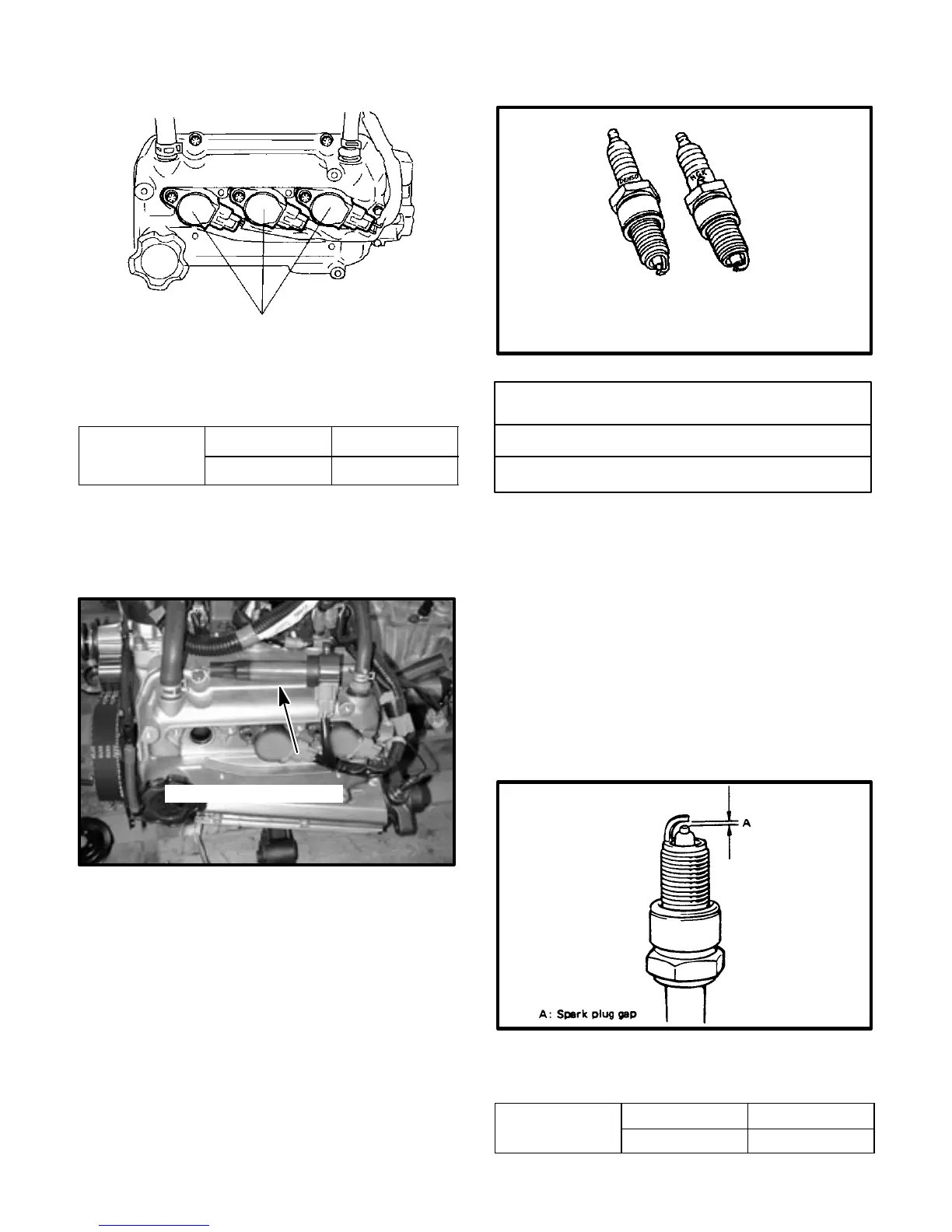125
IGNITION COIL
IGNITION COIL TEST
Ignition coil
Primary 1.08–1.32 Ω
res
stance
(cold)
Secondary 22.1–29.2 k/Ω
Measure primary and secondary coil resistances ( at 20°
C or 68° F). If the resistance is out of range in either the
primary or secondary circuit, replace the ignition coil with
a new one.
IGNITION COIL (REMOVED)
Using insulated pliers and current resistant work gloves,
remove the suspect ignition coil. Use a new spark plug
or one that is known to be a good spark plug. Insert the
plug into the ignition coil (with ignition wiring still attached
to the coil). Using gloves and insulated pliers, ground the
plug against a convenient unpainted surface on the
engine block.
Make absolutely certain that you are completely out of
the way of hot or moving parts and nothing will fall into the
engine when it starts. Have an assistant crank the
engine or use a remote starting switch while closely
observing the spark plug electrode. There should be a
fat blue spark at each ignition sequence. If no spark or
a weak yellow spark, replace the coil and try again.
SPARK PLUGS
Model
DCPR7E
XU22EPR–U
Manufacturer Plug gap (mm)
NGK 0.8~0.9
Denso
To check spark plugs, remove ignition coils, then remove
the spark plugs. Inspect the plugs for:
Electrode wear
Carbon deposits
Insulator damage
Spark plug gap
Remove any unusual deposits, adjust the plug gap ,
clean the plug with a spark plug cleaner or replace the
plugs with new. In the event of insulation damage or sev-
erly burned electrodes, oily deposits or other abnormal
condition, replace the spark plugs.
Install spark plugs and torque them to specifications
shown below
S
ark
lu
N–m kg–m
torque
25–30 2.5–3.0
